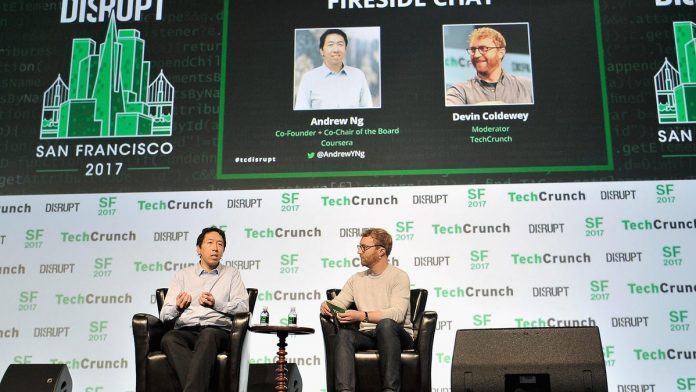SAN FRANCISCO, CA – SEPTEMBER 20: Coursera Co-Founder and Co-Chair of the Board Andrew Ng (L) and … [+]
In 2011, Stanford professor Andrew Ng—along with the help of Daphne Koller—posted videos of his course on machine learning. Within weeks, there were over 100,000 learners who viewed it. To put things into perspective: Ng’s on-campus course would involve about 400 students per year. This meant that he would have to teach for 250 years to get the same levels achieved on Coursera.
Ng and Koller realized that using a MOOC (Massive Open Online Courses) platform could be transformative for education. It would mean that many more people could benefit, regardless of geography or economic status.
While there have been many other MOOCs, Coursera has become one of the largest. And yes, the company is now preparing to go public.
According to Ng’s shareholder letter in the S-1: “We believe that education is the source of human progress. In today’s economy in which the skills needed to succeed are rapidly evolving, education is becoming more important than ever. As automation and digital disruption are poised to replace unprecedented numbers of jobs worldwide, giving workers the opportunity to upskill and reskill will be crucial to raising global living standards and increasing social equity. Online education will play a critical role, enabling anyone, anywhere, to gain the valuable skills they need to earn a living in an increasingly digital economy.”
Coursera has content from over 200 educational institutions and corporations. The approach to the curriculum—which includes over 4,000 courses—is to make it “stackable.” This means that a person can incrementally learn a particular domain.
But the content is also personalized by leveraging machine learning. After all, Coursera has the advantage of having access to large amounts of data on over 220 million enrollments. For example, Coursera’s Skills Graphs has sophisticated models that help provide better paths for job skills.
The Coursera business model is based a flywheel approach, which allows for price-to-cost advantages. The S-1 notes: “We believe our efficient learner acquisition model, powered by free, high-quality content, global partner brands, deep expertise in search engine optimization, strong word of mouth referrals, public relations, and a profitable affiliate paid marketing channel, enables us to attract learners to Coursera at scale.”
Here are some of the offerings:
No doubt, the market opportunity is enormous. In 2019, the spending on global higher education was $2.2 trillion, according to research from HolonIQ. As for the online degree category, it was $36 billion in 2019 and is forecasted to hit $74 billion by 2025.
Given Coursera’s strong brand and extensive platform, it has a good chance of getting an out-sized portion of the opportunity. Consider that it has 77 million learners registered.
And the financials have been robust. In 2020, the revenues surged by 59% to $293.5 million. Of course, one of the main reasons for this was the Covid-19 virus, which led to significant demand for online learning.
Yet the company did post a loss of $66.8 million in 2020, compared to a loss of $46.7 million in 2019. But this was to be expected as the company ramped up investments to meet the demand.
As for the IPO, it is likely to hit the markets sometime next month. The company expects to list its shares on the NYSE under the ticker of COUR and the lead underwriters include Morgan Stanley, Goldman Sachs, Citi and UBS Investment Bank.
Tom (@ttaulli) is an advisor/board member to startups and the author of Artificial Intelligence Basics: A Non-Technical Introduction, The Robotic Process Automation Handbook: A Guide to Implementing RPA Systems and Implementing AI Systems: Transform Your Business in 6 Steps. He also has developed various online courses, such as for the COBOL and Python programming languages.
Tom (@ttaulli) is the author of Artificial Intelligence Basics: A Non-Technical Introduction ( https://amzn.to/2InAZeT) and The Robotic Process Automation Handbook: A
Tom (@ttaulli) is the author of Artificial Intelligence Basics: A Non-Technical Introduction ( https://amzn.to/2InAZeT) and The Robotic Process Automation Handbook: A Guide to Implementing RPA Systems ( https://amzn.to/2tURWJx)






